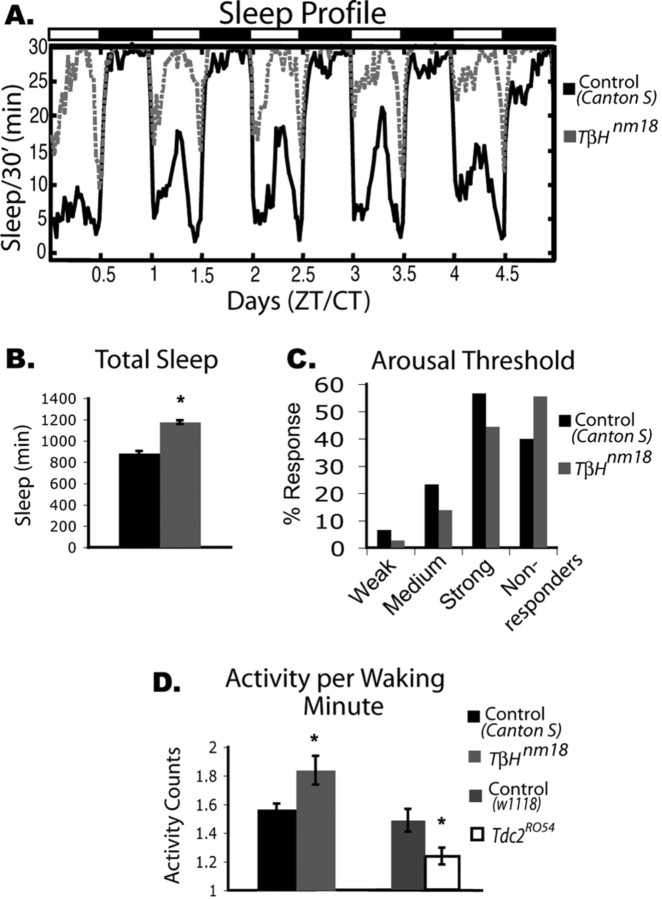Figure 3.
Baseline sleep phenotype of TβHnm18 mutants, which have decreased levels of octopamine and increased levels of tyramine. A, Five days of baseline sleep recording in TβH females. The TβHnm18 line (gray dashed line) shows significantly more sleep than its control, Canton S (black solid line). Dark bars and white bars on top indicate nighttime and daytime, respectively. Sixteen animals are shown for each group. CT, Circadian time; ZT, Zeitgeber time. B, Total sleep is significantly increased in the TbHnm18 mutants (mean ± SEM; TβHnm18, 1176 ± 17, n = 46; Canton S, 884 ± 20, n = 52; p ≤ 0.0001, two-way ANOVA). C, Arousal threshold for the TβHnm18 mutants. The animals were given three levels of stimulation to determine whether they were arousable. All animals that responded to the first stimulation were also aroused on stronger stimulation. Compared with wild type, the Tbh mutant line had a higher percentage of flies that did not respond to any of the three levels of stimulation. In addition, fewer Tdc2RO54 flies responded to the weaker stimuli (TβHnm18, n = 46; Canton S, n = 52). D, Activity per waking minute, which quantifies activity during the time the animal is awake, was significantly increased in the TβHnm18 mutants (mean ± SEM; TβHnm18, 1.84 ± 0.13; Canton S, 1.57 ± 0.05; p ≤ 0.01, Kruskal–Wallis test) but significantly decreased in the Tdc2RO54 mutants (mean ±SEM; Tdc2RO54, 1.2 ± 0.09; w1118, 1.5 ± 0.08; p ≤ 0.01, Kruskal–Wallis test).

